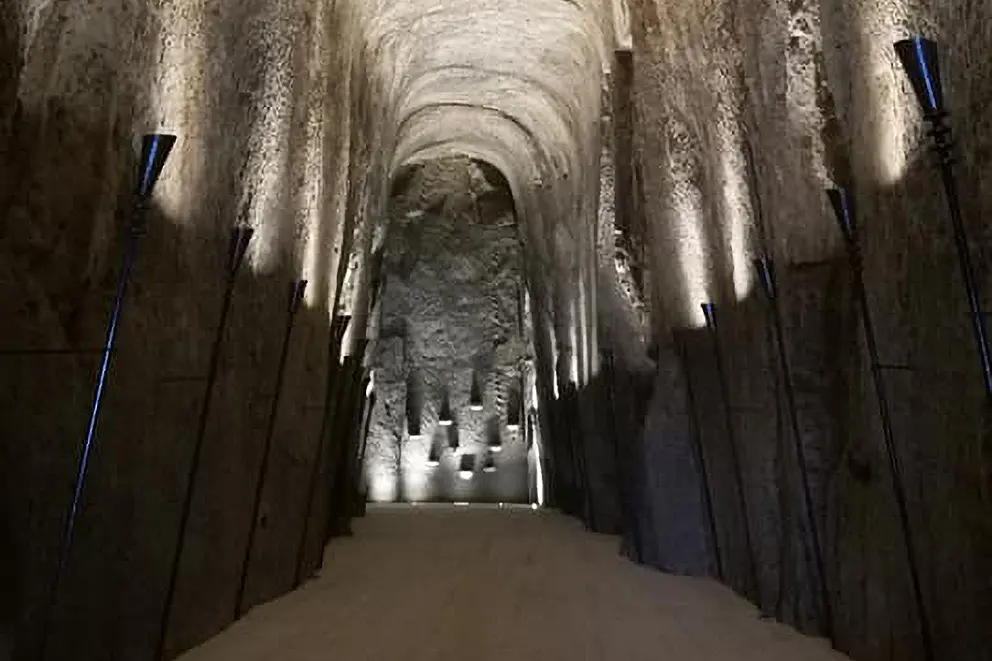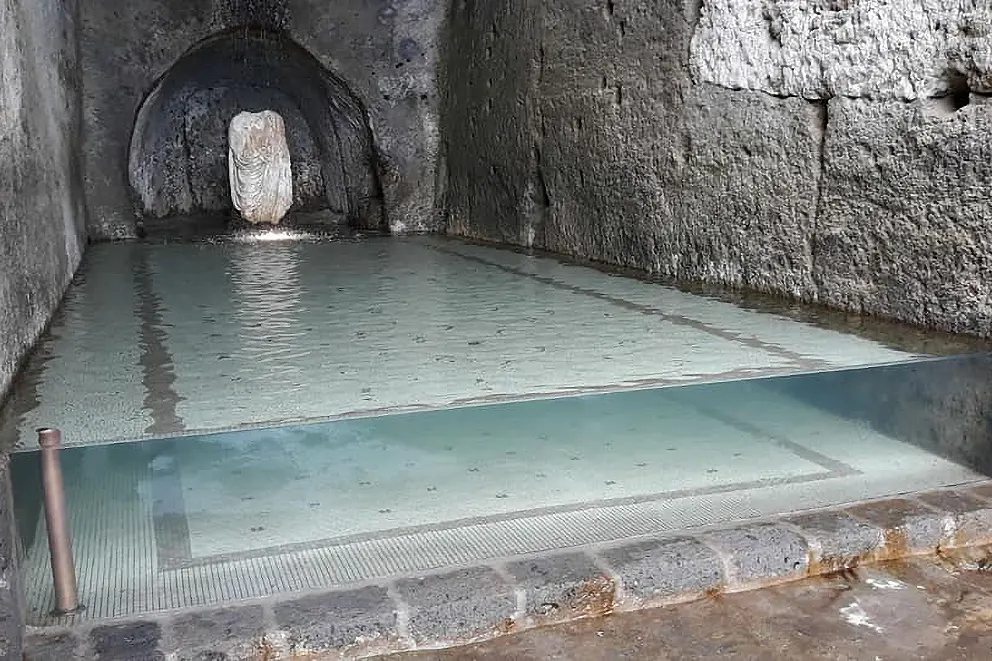Nymphaea of the Villa of Agrippa Postumo, the sacred dwellings of the Sorrentine nymphs
The sense of place. Sorrento between nature and culture
Historical and cultural background
The Nymphaeum is originally a place sacred to nymphs, i.e., a wood, a spring, a sanctuary. In Hellenistic (nymphaîon) and Roman times (nymphaeum), it was a construction, often apsidal, with niches and a columned façade, at the center of which there was a fountain. Along the coast of Sorrento and the Sorrento Peninsula there are various nymphaeums and two of the most fascinating are these, carved into the tuffaceous ridge, standing on the Roman ruins of the Villa of Agrippa Postumo. He was Augustus’ nephew, lived in the 1st century BC and chose Sorrento as his private residence, which was located above the cliff. At sea level, there were even older nymphaeums and fishponds, dating back to at least the second half of the 2nd century BC: a Ninfeo Maggiore, covered entirely in mosaic, and a Ninfeo Minore, covered in vitreous mosaic, accessible only by sea.
Physical characteristics
The nymphaeums of Sorrento were built within the tufa cliff characteristic of this coastline, an extraordinary element of a landscape celebrated by poets and painters. It is a natural terrace called the Piana di Sorrento, formed by the products of the most catastrophic eruption in the Mediterranean, known as the ‘Ignimbrite Campana’, which occurred some 39,000 years ago by the Campi Flegrei volcano. The erupted volcanic products were embedded in much older limestone (dating back to the Cretaceous period), throughout the area between Meta and Sorrento, forming an extensive and high greyish tuffaceous bank, known as ‘Tufo Grigio Campano’, which falls sheer to the sea with a cliff 50 to 100 meters high.
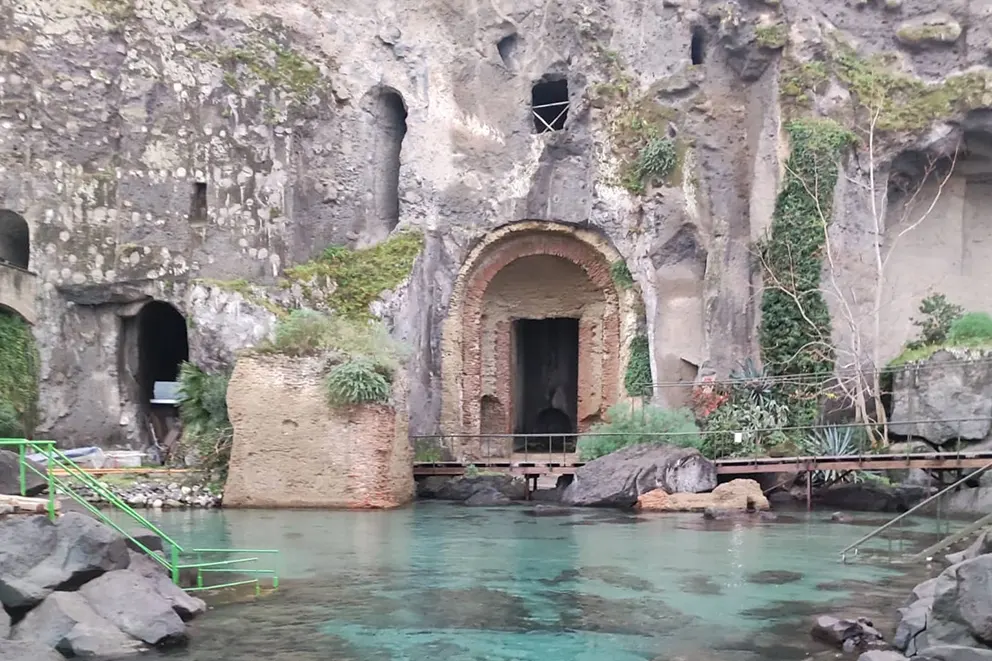
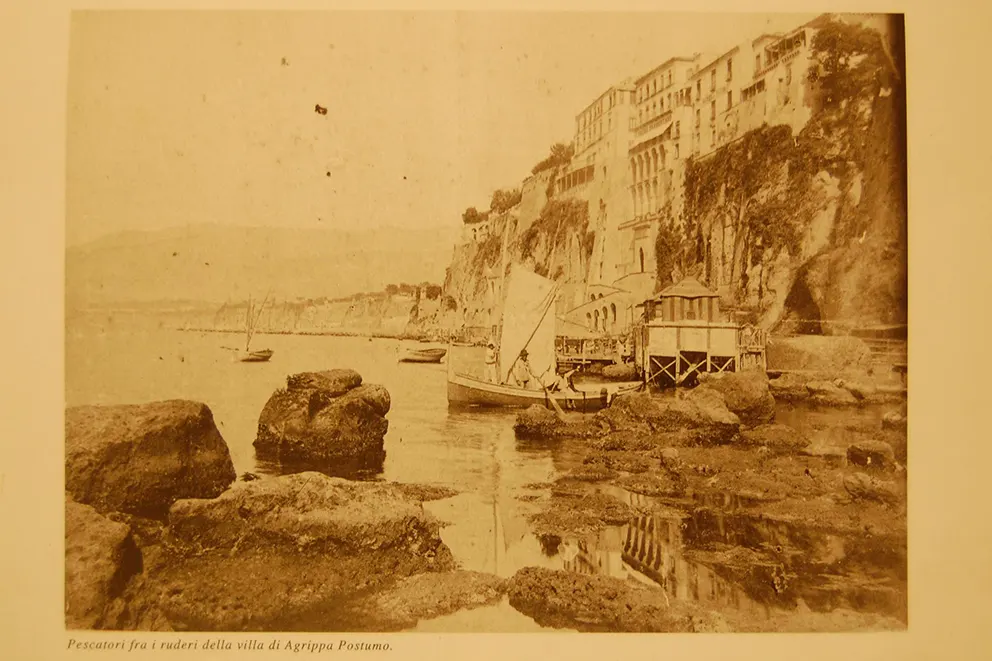
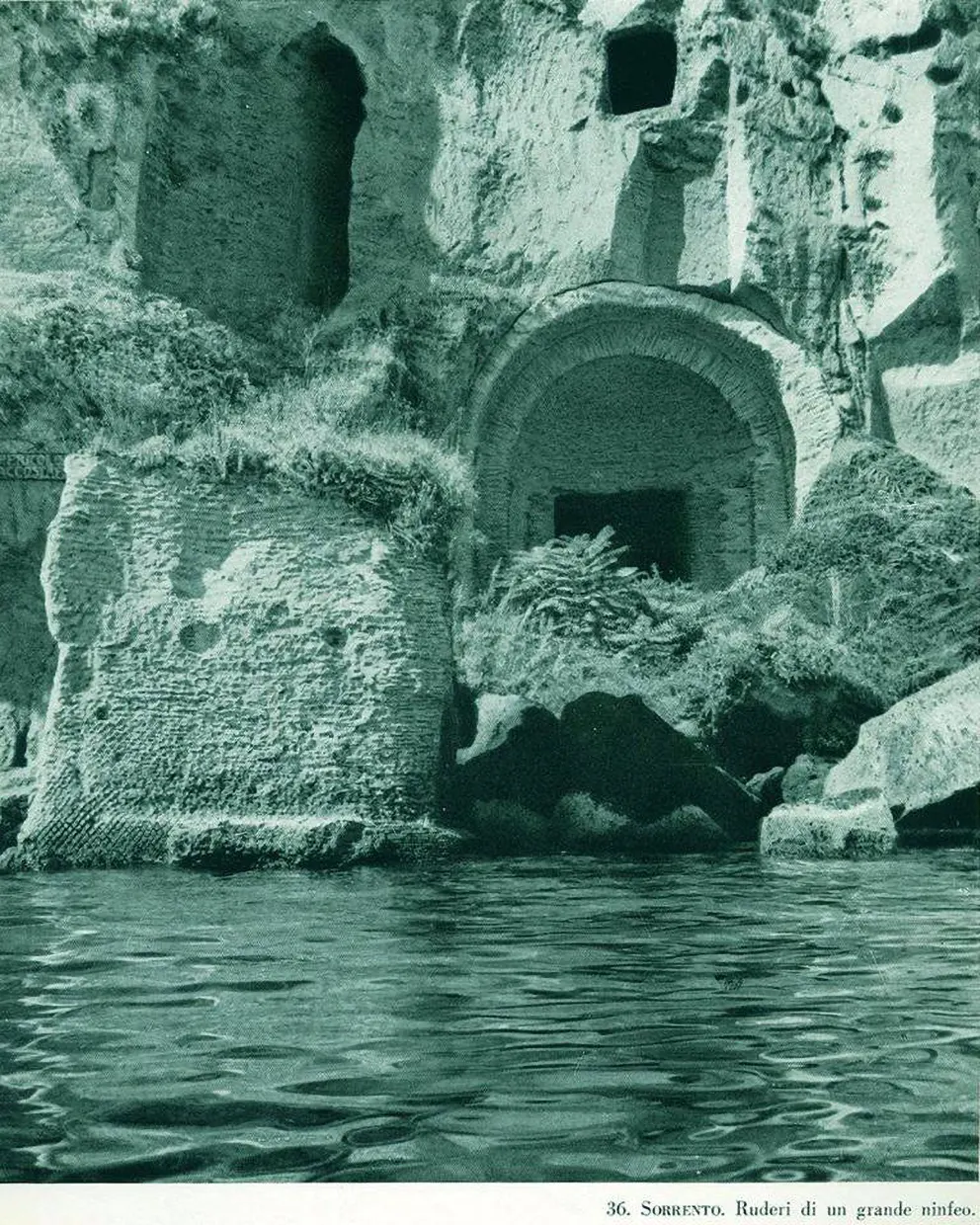
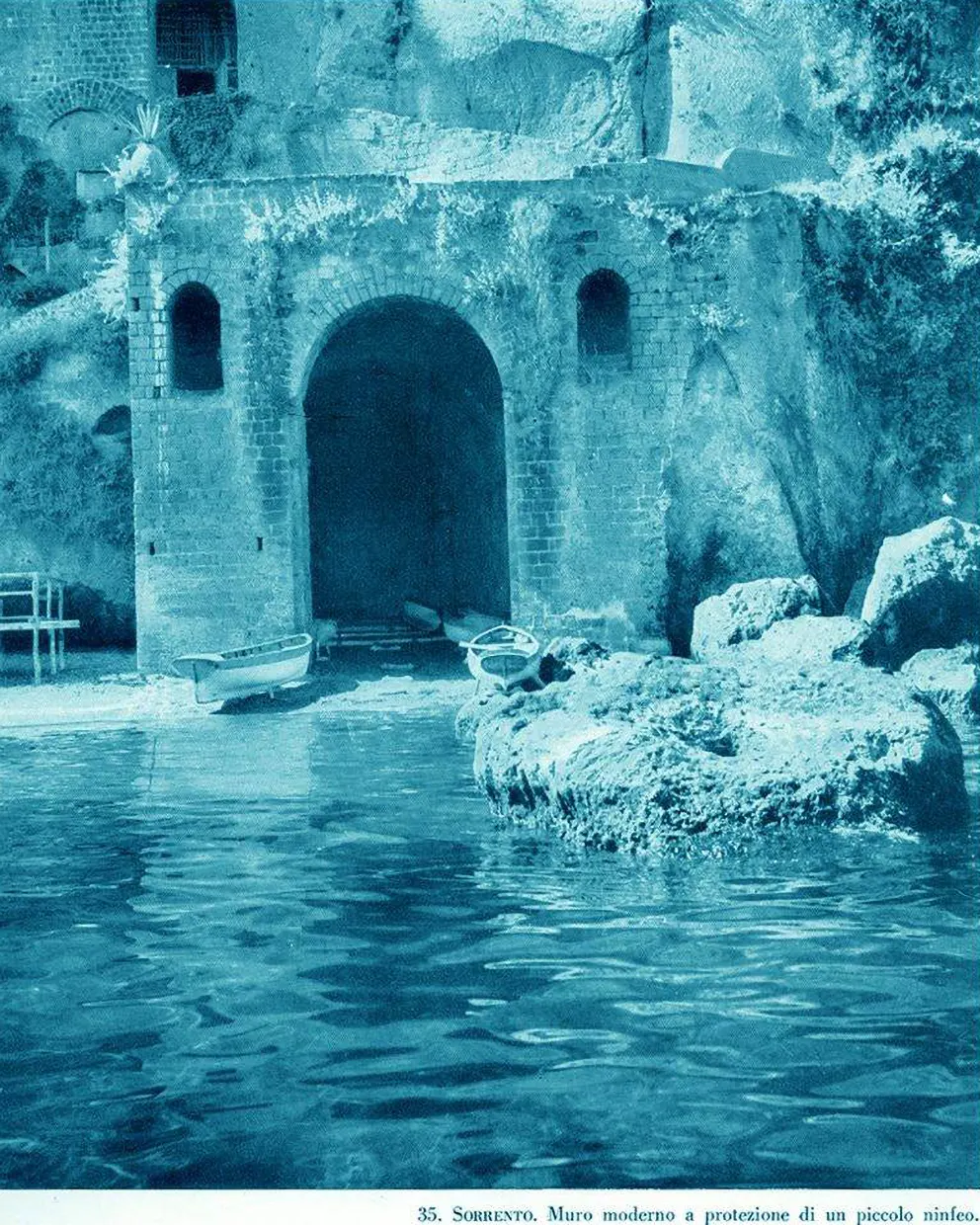
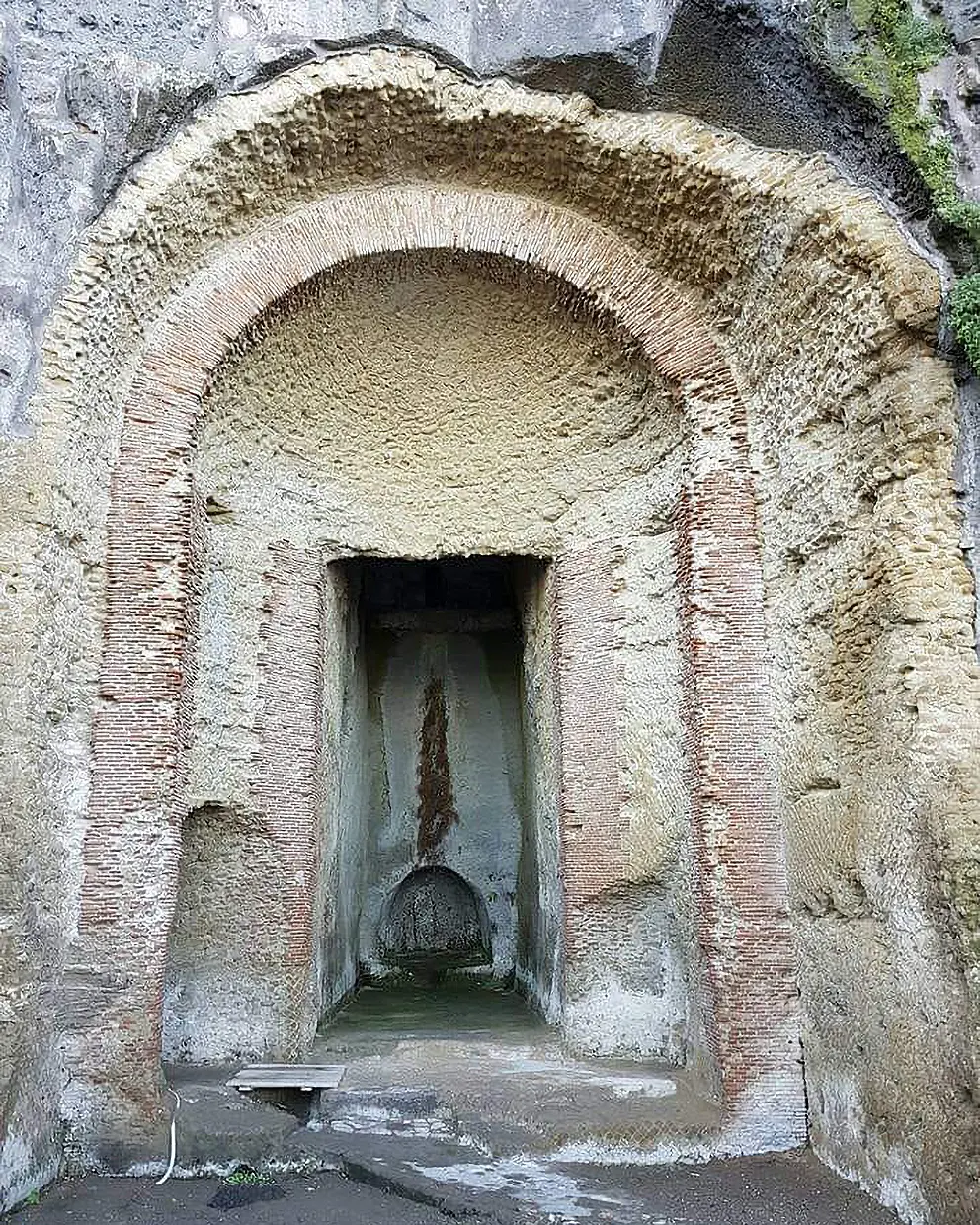
Botanical specificities
The Sorrentine tuffaceous cliff has a vertical conformation, so it does not have any vegetation cover. However, even in such a difficult condition, some small plants manage to adapt and find the necessary for their existence. These are essentially elements of the so-called ‘macchia mediterranea’, the most typical and frequent vegetation formation on the entire Sorrento Peninsula, i.e., a complex system of coastal evergreen thickets, in which shrubs such as myrtle, mastic, laurel, rosemary, broom and so on predominate. Among the numerous herbaceous plants, one can encounter sarsaparilla, euphorbia, and various types of mosses.
Faunal peculiarities
In the tuffaceous rocks of this area, it is possible to observe Rudiste, i.e., large fossil shells. These are the petrified footprints of extinct bivalve mollusks with a thick, unequal shell, present on our planet since the Jurassic period, between about 200 and 150 million years ago, reaching their peak in the Cretaceous period, between 150 and 65 million years ago, and becoming extinct at the end of this period. They lived in close contact with the seabed and had developed reef habits, becoming among the main organisms to form reefs in the late Mesozoic seas. Today, the sea immediately off the coast of the Sorrento nymphaeums is inhabited by small crustaceans and mollusks, as well as various types of blue fish, i.e., sardines, anchovies, mackerel, garfish, costardelle and other small fish characterized by dorsal coloring often tending to blue, in some cases green and silvery.
